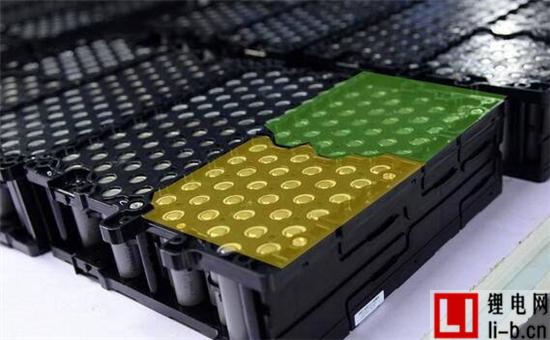Dry goods sharing] Analysis of common problems in lithium battery processing in battery processing
Lithium Grid News: Lithium iron phosphate has a low diffusion coefficient and poor conductivity. The greater the energy required to overcome surface energy dispersion.
Lithium Grid News: Lithium iron phosphate has a low diffusion coefficient and poor conductivity. Therefore, the current practice is to make the particles smaller or even nanoscale, and improve the migration path of LI+ and electrons. Its charge and discharge speed (theoretically, the migration time is inversely proportional to the square of the migration path). But this brings a series of problems to battery processing.
The first thing I encountered was the problem of material dispersion.
Pulping is one of the most critical processes in the battery production process. Its core task is to uniformly mix active materials, conductive agents, binders, etc., so that material properties can be better played. To mix, you must first disperse. As the particles decrease, the corresponding specific surface increases, the surface energy increases, and the tendency of polymerization between the particles increases. The greater the energy required to overcome surface energy dispersion. Mechanical agitation is now commonly used, and the mechanical agitation energy distribution is not uniform. Only in a certain area, the shear strength is large enough and the energy is high enough to separate the polymerized particles. To improve the dispersing ability, one is optimized on the structure of the mixing equipment, and the space ratio of the effective dispersing area is increased without changing the maximum shearing speed; one is to increase the stirring power (increasing the stirring speed) and increase the shearing speed, correspondingly The effective dispersion space will also increase. The former is a problem on the device, how much room is raised, and the coating is online without comment. In the latter case, the lifting space is limited, because the shearing speed refers to a certain limit, which will cause damage to the material and cause the particles to break.

A more effective method is to use ultrasonic dispersion technology. It’s just that the price of the ultrasonic equipment is higher, and the one that came into contact with it earlier is comparable in price to the imported Japanese mechanical mixer. The ultrasonic dispersion process time is short, the overall energy consumption is reduced, the slurry dispersion effect is good, the polymerization of the material particles is effectively delayed, and the stability is greatly improved.
In addition, the dispersion effect can be improved by using a dispersing agent.
Coating uniformity problem
Uneven coating, not only battery consistency is not good, but also related to design, safety and other issues. Therefore, the control of coating uniformity during battery manufacturing is very strict. Knowing the formulation and coating process, the smaller the material particles, the harder it is to make the coating uniform. As far as the mechanism is concerned, I have not seen the relevant explanation. Coating is believed to be caused by non-Newtonian fluid properties of the electrode slurry.
The electrode slurry should be a thixotropic fluid in a non-Newtonian fluid. The fluid is characterized by being viscous at rest, even in solid form, but becomes thinner after agitation and tends to flow. The binder is linear or network-like in the submicroscopic state. When agitated, these structures are destroyed and the fluidity is good. After standing, they are reformed and the fluidity is deteriorated. The lithium iron phosphate particles are fine, and the number of particles is increased under the same quality. To form them together to form an effective conductive network, the amount of conductive agent required is correspondingly increased. The particles are small, the amount of the conductive agent is increased, and the amount of the binder required is also increased. When standing, it is easier to form a network structure, and the fluidity is inferior to conventional materials.
During the process of removing the slurry from the agitator to the coating process, many manufacturers still use the turnover tank to transfer. During the process, the slurry is not stirred or the stirring strength is low, and the fluidity of the slurry changes, gradually becoming viscous, so that it is like The same as jelly. Poor fluidity results in poor uniformity of coating, which is manifested by an increase in the tolerance of the sheet density and a poor surface morphology.
The fundamental thing is to improve from the material, such as increasing the conductivity and increasing the granules, spheroidizing the particles, etc., and the effect may be limited in a short time. Based on existing materials, from the perspective of battery processing, the way to improve can be tried from the following:
1. Using "linear" conductive agent
The so-called "linear" and "granular" conductive agents are the author's image, which may not be so described academically.
The use of "linear" conductive agents, currently mainly VGCF (carbon fiber) and CNTs (carbon nanotubes), metal nanowires and so on. They diameter of several nanometers to several tens of nanometers, a length of several tens of microns or more even at a few centimeters, and the commonly used "particulate form" conductive agent (such as Super P, KS-6) size is generally in the tens of nanometers, battery The size of the material is a few microns. a pole piece composed of a "grain-shaped" conductive agent and an active material, which contacts a contact between a similar point and a point, and each point can only come into contact with a surrounding point; in a pole piece composed of a "linear" conductive agent and an active material, It is the contact between a point and a line, a line and a line. Each point can be in contact with a plurality of lines at the same time. Each line can also be in contact with a plurality of lines at the same time, and more nodes are contacted, and the conductive path is more smooth and conductive. It is even better. The use of a variety of different forms of conductive agent combination, can play a better conductive effect, specifically how to make the choice of conductive agent, is a problem worth exploring for battery production.
The possible effects of using "linear" conductive agents such as CNTS or VGCF are:
(1) The linear conductive agent improves the bonding effect to a certain extent, and improves the flexibility and strength of the pole piece;
(2) reduce the amount of conductive agent (remember that it has been reported that the electrical conductivity of CNTS is three times that of the conventional mass (weight) conventional particle conductive agent), comprehensive (1), the amount of glue may also be reduced, the active substance content may be improved;
(3) Improve polarization, reduce contact resistance, and improve cycle performance;
(4) There are many contact nodes in the conductive network, the network is more perfect, the rate performance is better than the conventional conductive agent; the heat dissipation performance is improved, which is very meaningful for the high rate battery;
(5) The absorption performance is improved;
(6) The price of materials is higher and the cost is rising. 1Kg conductive agent, commonly used SUPER P is only tens of dollars, VGCF is about 2-3 thousand yuan, CNTS is slightly higher than VGCF (when the amount is 1%, 1Kg CNTs is calculated by 4000 yuan, about 0.3 yuan per Ah cost) ;
(7) CNTS, VGCF and other specific surfaces are higher, how to disperse is a problem that must be solved in use, otherwise the performance of dispersion is not good. Can be by means of ultrasound dispersion. CNTs manufacturers provide dispersed conductive liquids.
2. Improve dispersion
When the slurry has a good dispersion effect, the probability of particle contact agglomeration is greatly reduced, and the stability of the slurry is greatly improved. The improvement of the formulation and the ingredients step can improve the dispersion effect to a certain extent, and the ultrasonic dispersion mentioned above is also an effective method.
3. Improve the slurry transfer process
When the slurry is stored, it is considered to increase the stirring speed to avoid the viscous slurry; for transferring the slurry using the turnover drum, the discharge time to the coating time is shortened as much as possible, and the pipeline transportation is changed to the condition to improve the viscosity of the slurry.
4. Using extrusion coating (spraying)
Extrusion coating can improve the surface of the blade coating, uneven thickness, etc., but the equipment price is higher, and the stability of the slurry is higher.
Difficult to dry
Since lithium iron phosphate has a larger surface area and a larger amount of binder, the amount of solvent required for preparing the slurry is large, and drying after coating is more difficult. How to control the evaporation rate of the solvent is a problem worthy of attention. The temperature is high, the air volume is large, the drying speed is fast, and the generated voids are large. At the same time, the migration of the colloid may be driven, resulting in uneven distribution of materials in the coating. If the colloid is aggregated on the surface layer, the conduction of charged particles is hindered. Increase the impedance. The temperature is low, the air volume is low, the solvent escapes slowly, the drying time is long, and the production capacity is low.
Poor bonding performance
Small particles of lithium iron phosphate material, the surface area ratio than lithium cobaltate , lithium manganate with a lot increases, it requires more adhesive. However, the binder is used more, the content of the active material is lowered, and the energy density is lowered. Therefore, in the case where the battery is produced, the amount of the binder is tried to be reduced. In order to improve the bonding effect, the current common practice of lithium iron phosphate processing on the one hand increases the molecular weight of the binder (high molecular weight, improved bonding ability, but the more difficult the dispersion, the higher the impedance), on the one hand, the amount of binder is increased. It seems that the results are not yet satisfactory.
Poor flexibility
At present, when the lithium iron phosphate pole piece is processed, it is generally felt that the pole piece is hard and brittle, and the influence on the laminated piece may not be slightly small, but it is very disadvantageous when it is wound. The pole piece has poor flexibility, and it is easy to fall off powder and break when winding and bending, resulting in short circuit and the like. The mechanism explanation in this respect is still unclear. It is guessed that the particles are small and the elastic space of the coating is small. Lowering the compaction density can be improved, but the volumetric energy density is also reduced. The compaction density of the original lithium iron phosphate is relatively low, and the reduction of compaction density is a means that must not be taken.


 Online map
Online map Collection Website
Collection Website
